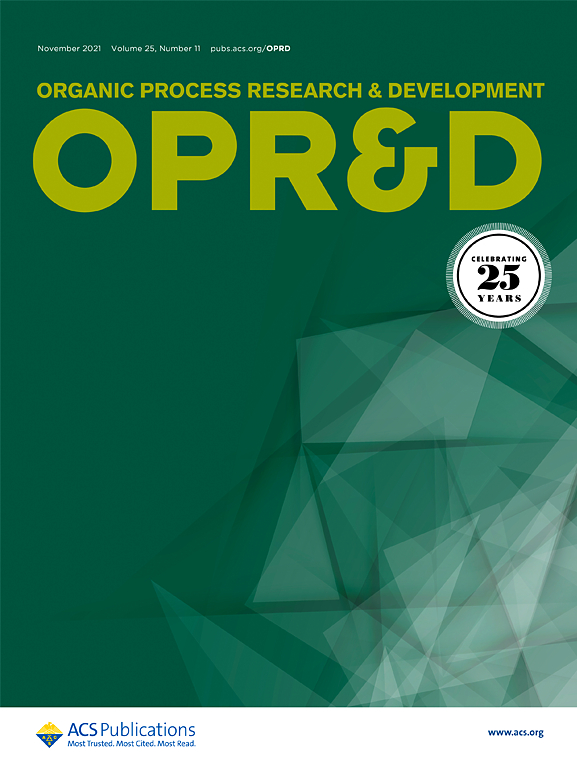Continuous Flow Synthesis and Kinetic Study of Diphenyl Sulfoxide in a Microreactor
IF 3.1
3区 化学
Q2 CHEMISTRY, APPLIED
引用次数: 0
Abstract
The oxidation of diphenyl sulfide (DPS) by hydrogen peroxide (H2O2) to synthesize diphenyl sulfoxide (DPSO) is extremely exothermic and has a high thermal risk. When thermal runaway happens, it may lead to equipment damage or even explosions. Therefore, in this work, a microreactor was adopted to reduce reaction thermal risk and process conditions were optimized. Phosphotungstic acid (PTA) was used as the catalyst, and the effects of process conditions, including reaction temperature, residence time, catalyst concentration, and molar ratio on the conversion and yield were systematically investigated. The results showed that the DPSO yield could reach up to 84.3% under the condition of 0.75% catalyst loading, 25 min residence time, 70 °C reaction temperature, and H2O2–DPS molar ratio of 2. Then, apparent reaction kinetics were studied, and a kinetic model was established and validated. By varying the initial concentrations of H2O2 and DPS, the reaction was determined to be of second-order, with an activation energy of 57.5 kJ·mol–1 and a pre-exponential factor of 2.96 × 107 mol–1·L·min–1. Furthermore, the temperature distribution along the microreactor was estimated by combining the thermal equilibrium with the reaction kinetics. The results indicated that in a 1/16 in. microreactor, the reaction was nearly isothermal. Temperature distributions were also predicted for microreactors with different diameters and materials. It was demonstrated that the reaction could be safely scaled up to a 3/8 in. microreactor at a reaction temperature of 55 °C, with the maximum temperature rise remaining below 5 °C and no decline in DPSO yield. This study provided a convenient method to guide the safe sizing-up of the reaction in flow reactors.

求助全文
约1分钟内获得全文
求助全文
来源期刊
CiteScore
6.90
自引率
14.70%
发文量
251
审稿时长
2 months
期刊介绍:
The journal Organic Process Research & Development serves as a communication tool between industrial chemists and chemists working in universities and research institutes. As such, it reports original work from the broad field of industrial process chemistry but also presents academic results that are relevant, or potentially relevant, to industrial applications. Process chemistry is the science that enables the safe, environmentally benign and ultimately economical manufacturing of organic compounds that are required in larger amounts to help address the needs of society. Consequently, the Journal encompasses every aspect of organic chemistry, including all aspects of catalysis, synthetic methodology development and synthetic strategy exploration, but also includes aspects from analytical and solid-state chemistry and chemical engineering, such as work-up tools,process safety, or flow-chemistry. The goal of development and optimization of chemical reactions and processes is their transfer to a larger scale; original work describing such studies and the actual implementation on scale is highly relevant to the journal. However, studies on new developments from either industry, research institutes or academia that have not yet been demonstrated on scale, but where an industrial utility can be expected and where the study has addressed important prerequisites for a scale-up and has given confidence into the reliability and practicality of the chemistry, also serve the mission of OPR&D as a communication tool between the different contributors to the field.

 求助内容:
求助内容: 应助结果提醒方式:
应助结果提醒方式:


